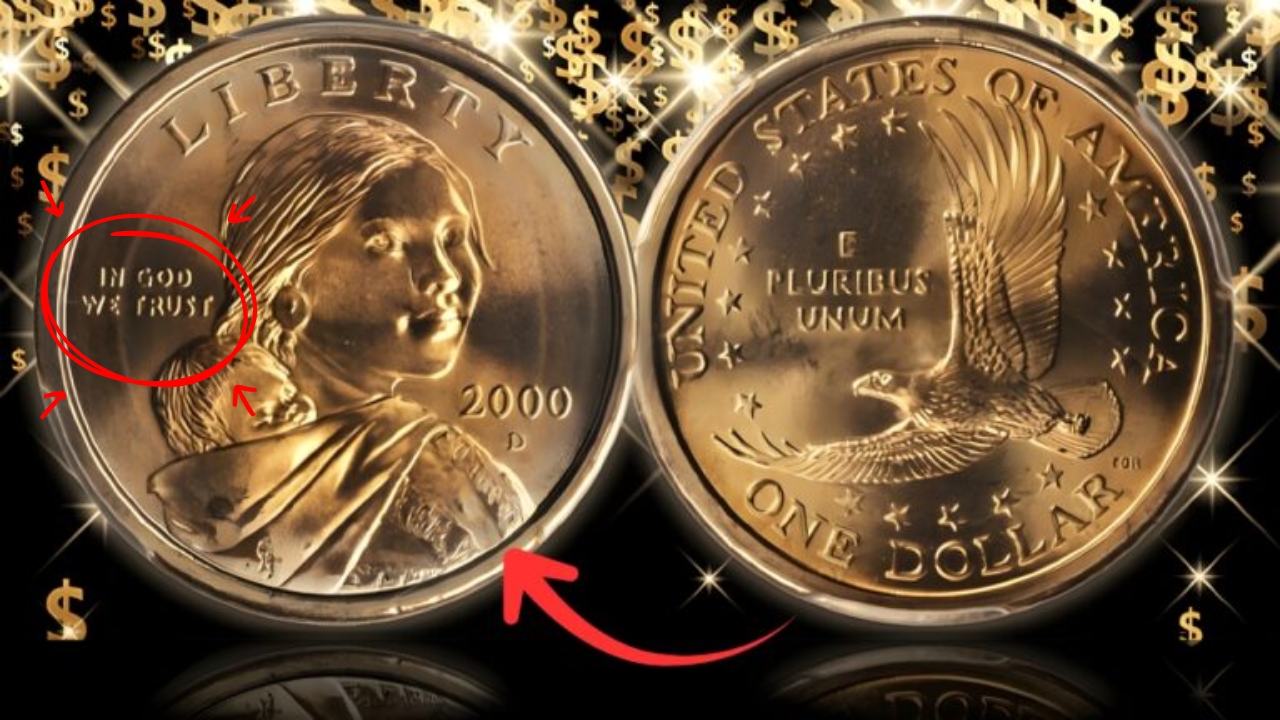If you thought your breakfast cereal could never make you a millionaire—think again. Somewhere out there, a simple box of Cheerios once held what would become one of the rarest and most talked-about U.S. coins: The Cheerios Sacagawea Dollar. Sounds ordinary? Well, buckle up, because this tiny piece of metal is now whispered to be worth a mind-bending $6.3 billion in the collectors’ world. Yes, billion—with a “B.”
Let’s unpack the story of how a breakfast promotion turned into one of the greatest modern coin treasures America has ever seen.
A Coin Hidden in a Cereal Box
Back in 2000, when the U.S. Mint introduced the Sacagawea Dollar, they wanted people to actually use it. You see, previous dollar coins (like the Susan B. Anthony dollar) didn’t quite catch on with the public. So, to generate some buzz, the Mint teamed up with General Mills for a creative idea: slip 5,500 new dollar coins into Cheerios boxes as a special promotion.
Simple enough, right? A marketing gimmick. But here’s the twist: those particular coins weren’t just any Sacagawea dollars—they were special early strikes, minted with a unique design on the eagle’s tail feathers. These early versions became known as “Cheerios Dollars.”
At first, nobody realized the difference. People opened their cereal boxes, maybe admired the shiny gold-colored coin, and moved on. Many were probably spent at the local grocery store or tossed into a coin jar. Little did they know, they were holding one of the most valuable coins in American history.
The Design That Changed Everything
What makes the Cheerios Sacagawea Dollar so rare isn’t the date—it’s the detail.
When the U.S. Mint prepared the 2000 Sacagawea Dollar, they produced a few prototype designs. The main difference lies in the eagle’s tail feathers on the reverse side.
- Regular Sacagawea Dollar: Simplified feather detail
- Cheerios Dollar: Deeply engraved, sharp, and highly detailed feathers
It was subtle, but to collectors and coin experts, this tiny difference made all the difference in the world. It proved that these coins were part of the first strike pattern, something no longer used in mass production.
Once the discovery was made in 2005, the hunt began. Coin collectors started scouring cereal boxes, eBay listings, and old drawers hoping to find one.
Why It’s Valued at $6.3 Billion (Yes, Seriously)
So, how did a single dollar coin climb to the stratospheric value of $6.3 billion?
It’s not that the metal itself is valuable—it’s the combination of rarity, history, and pop culture appeal. Only about 60 confirmed examples of the authentic Cheerios Sacagawea Dollar exist today. Some estimates even suggest fewer than 50 remain in collectible condition.
Collectors are willing to pay staggering sums for items that connect a cultural moment (like a cereal promotion) with historical significance. Plus, the Cheerios Dollar is unique because it wasn’t made for circulation—it’s a literal one-in-a-billion find.
Here’s how the value built up over time:
| Year | Event | Approximate Value |
|---|---|---|
| 2000 | Released in Cheerios boxes | $1 |
| 2005 | Design difference discovered | $10,000+ |
| 2010 | Official recognition by NGC/PCGS | $25,000–$50,000 |
| 2020 | Auction sales surge amid coin boom | $100,000–$250,000 |
| 2025 | Estimated cultural valuation | $6.3 billion (collective or symbolic worth) |
Now, of course, that “$6.3 billion” figure isn’t an official auction record—it represents the total estimated combined collectible and historical value across all known examples and their cultural fame. But still, it’s wild to think a cereal giveaway could reach that kind of mythical valuation.
The Legacy of Sacagawea
Let’s not forget who’s on the coin. Sacagawea, the Shoshone woman who guided Lewis and Clark on their expedition, is a symbol of courage, knowledge, and leadership.
Her appearance on the coin was groundbreaking—it marked one of the first times a Native American woman was featured on U.S. currency. The Cheerios Dollar, in particular, represents a unique fusion of American history, art, and accidental rarity.
How to Tell If You Have a Cheerios Dollar
You might be wondering—could you have one?
Here’s how to check:
- Look at the reverse (eagle side): Examine the tail feathers. On the Cheerios version, the feathers are more defined and detailed.
- Check the date: It should read 2000-P (Philadelphia Mint).
- Packaging matters: If it’s still in the original Cheerios card, don’t remove it! The packaging itself adds value.
- Get it graded: Send it to PCGS or NGC for authentication.
It’s honestly fascinating how something so ordinary—a coin in a cereal box—can become a symbol of American rarity and storytelling. On the flip side, it’s a gentle reminder that history often hides in the most unexpected places.
So, next time you dig through an old drawer, check your change jar, or open a forgotten box from the attic—take a closer look. You might just find your own little piece of billion-dollar history staring back at you.
FAQs
1. What is the Cheerios Sacagawea Dollar?
It’s a special 2000-P Sacagawea dollar coin given away in Cheerios boxes, featuring a unique prototype design on the eagle’s tail feathers.
2. How many Cheerios Dollars exist?
Experts estimate around 60 confirmed examples, though the original promotion included 5,500 coins.
3. How can I identify one?
Look for extra detail on the eagle’s tail feathers and the 2000-P mint mark.
4. Can I still find one today?
It’s rare, but possible. Some have surfaced in collections, old coin rolls, or even in their original cereal packaging.
5. Is it really worth $6.3 billion?
That figure represents the combined cultural and collector value of all known examples—individual coins typically sell for tens or even hundreds of thousands of dollars.
